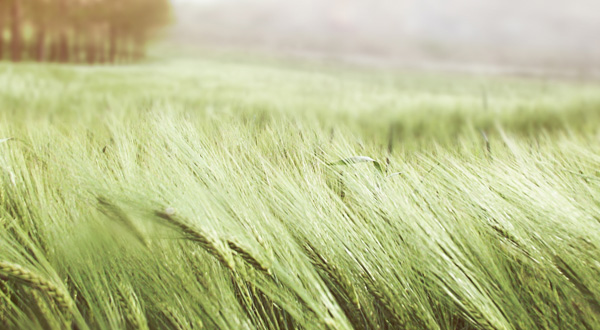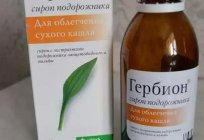Now - 23:45:28
Flavonoid - what is it? What contains flavonoids and what is their impact on the human body?
The Ability of some fruits and vegetables to improve the functioning of certain organ systems have long been known to mankind. As a result of researches it became known that these useful properties of a special substance, which is contained in plants and plays a crucial role in their livelihoods. And this substance called "flavonoids". What it is, and how it affects the human body, you can learn from this article. 
A Little history
Physicians in ancient times used the beneficial properties of some vegetables and fruits to treat various diseases. However, they have not even thought about the question, what are the substances included in the composition of these plants, make these products can cure a particular disease. For the first time the question of a flavonoid - that is, answered the Nobel prize in medicine and physiology, albert de Szent-Gyorgyi in 1936. His research has focused on flavonoids contained in red pepper. Albert de Szent-Gyorgyi found that consumption of this vegetable helps to strengthen the walls of blood vessels due to some beneficial substances of red, and called them vitamin P. However, this name did not stick. Moreover, over the next fifty years, this topic is not very interested in science, but in the early 90-ies of the last century began to experience a new boom. This was due to the fact that a group of American scientists discovered the antioxidant properties of flavonoids contained in certain fruits and vegetables. After that it was decided to use these useful qualities of plants to neutralize free radicals.

What is a flavonoid?
The Group of substances contained in vegetables, fruits, berries and vegetation affect the action of enzymes in the body called flavonoids. They are widely used in folk and traditional medicine, pharmacology. These substances are also responsible for the color of the fruit, they participate in photosynthesis. What is a flavonoid? This the vitamin or something else? It is a heterocyclic compound. It is poorly soluble in water, can be of different colors (yellow, red, orange, etc.). Flavonoids can also be called natural vegetable dyes. They are found only in plants, but in any case not in the animal body.
Recommended
A tablet from worms – the relevance of the application for the person
How relevant today, drugs against worms in humans? What kind of creatures these worms, what are modern methods of treatment? We will try to answer these questions, since ignorance in this area is undesirable. Imagine a mummy, which is misleading in k...
What to do if you cracked skin on hands?
Each of us at least once in a lifetime encounter with a small, but very, when the crack the skin on the hands. At this time there are wounds of different sizes, which hurt and cause inconvenience, especially when in contact with water or detergents. ...
Spray Macho man - the key to a proper relationship between the two spouses
Male impotence is a pathological condition associated with abnormal physiological capacity of the penis to reginout and bring sexual partner pleasure in bed.sex impotenceimpotence may not men to pass unnoticed – it usually spoils his nervous sy...
Flavonoids: classification and types
Today, scientists identified more than 6500 flavonoids, which are combined into 24 groups. Among them are lipophilic and water-soluble compounds. Some of these groups are pigments of vegetable origin. They determine the color of the fruit plants and flowers. Depending on the degree of oxidation of 3-carbon fragment are of the following classes of flavonoid compounds:
- Leukoanthocyanidins (leucocyanidins, lamadeleine, lamplighter);
- Catechine;
- Flavanone;
- Balcony;
- Dihydrochalcone;
- Flavanonol;
- anthocyanins and anthocyanidins;
- Aurona;
- Flavonols (bioflavonoids);
- Isoflavones.
The Most famous of flavonoids today is rutin or as it is otherwise called vitamin C2, or R. What is he so famous? This substance has a special sosudoukreplyayuschim property. It (or its synthetic equivalent) is one of the components of many drugs, for example, rutin is part of the drug Ascorutinum designed to enhance elasticity of capillaries and blood vessels.
Flavonoids: effects on the body
The Beneficial properties of flavonoids for the human body is not limited to, vessel restorative effect. In addition, they provide such a very important impact, such as:
 Protivootechnoy;
Protivootechnoy;- Venotonizirutee;
- Sosudorasshiryayuschee;
- Antiateroskleroticescoe;
- Membranostabiliziruyuschee;
- Protivoallergicheskoe;
- Antigipertenzivnoe;
- Protivovospalitelnoe;
- Cardioprotective;
- Immunomodulirutee;
- Antikanzerogenna;
- Antioksidantnoi;
- Detoksiciruuschee;
- Antigipoksanta;
- Estrogen-like etc.
Based on this, we can say, the flavonoids possess antioxidant, radioprotective, antispasmodic, antiswine, antitumor, anti-inflammatory, wound healing, hypotensive, estrogenic, antibacterial, and diuretic properties.
Useful properties

As you can see, flavonoids for humans is useful and even necessary. They contribute to the proper functioning of the organism, and their action is non-corrosive. Knowing about its beneficial properties easily by yourself to help your body in the solution of some problems. For example, thanks antioksidantnogo action red wine (in moderation) is recommended for residents of areas with high radiation. However, flavonoids, effect on the body which is scientifically proven, however, are not the main therapeutic means. They can only be auxiliary, accompanying basic therapy. However, despite the fact that the flavonoids in plants are found in sufficient quantity, however, they are often unstable. If not properly treated, they can die.
Foods that contain flavonoids
Today drugs containingthe flavonoids that you can buy in a drugstore or order online. However, it is much healthier to take fruits and vegetables which include these nutrients. Where is contain flavonoids? Here is a partial list of products that have these nutrients:

- Cacao;
- Tea, especially green (catechins and flavones);
- Red grapes and red wine;
- Apricots, plums, apples, peaches, grouchy, quince, etc.;
- Berries: cherries, blueberries, raspberries, blueberries, strawberries, black and red currant, black mulberry, hawthorn, barberry, etc.;
- Citrus: lemon, orange, grapefruit, Mandarin (flavanone, flavones);
- Vegetables: cabbage, carrots, beets, eggplant, etc.
Flavonoide most rich in vegetables and fruits that have bright red or purple color, including wild fruits. It is proved that in the past the content of natural pigments is much higher and it's basically leukoanthocyanidins, Rosaceae also contains flavones, and beans - isoflavones.
How to take flavonoids?
At the present time there is hardly anyone who hasn't heard the word "flavonoid", what it is and what it "eat". In recent years, these substances are in the focus of pharmacologists, who are increasingly using them for production of drugs. By the way, many scholars of this region was "infected" with the idea of creating the so-called elixir of youth, using all the same flavonoids. The use of these substances for the human body is obvious. However, whether their useful properties to fight the signs of aging? In any case they are definitely more good than harm. Therefore, the use of flavonoid-rich vegetables, fruits, berries, herbs will only be conducive to your health fill the body with energy. You will feel younger, fresher, fresher and healthier. Plus, these foods can be eaten in unlimited quantities. Believe me, no overdose of flavonoids does not threaten you, of course, if it is not a bioactive supplements. In no case can not be used without medical advice or without studying the instructions, especially the "dosage".
Article in other languages:
HI: https://tostpost.com/hi/health/8037-flavonoid---flavonoids.html

Alin Trodden - author of the article, editor
"Hi, I'm Alin Trodden. I write texts, read books, and look for impressions. And I'm not bad at telling you about it. I am always happy to participate in interesting projects."
Related News
The drug "Bronhorus" (syrup): instruction manual for kids, membership, description and reviews
what dosage may be prescribed medication “Bronhorus" (the syrup)? Application instruction for children and adults will be presented below. Also from this article you will learn about what components are part of the cons...
Increased hairiness in girls: causes and treatment to what doctor to address
Modern trends suggest the almost complete absence of hair on women's body except the head. But, unfortunately, some ladies have to consult specialists about excess hair growth in places where they shouldn't be.This is hirsutism, t...
Elevated protein in blood: causes. Biochemical analysis of blood. Total protein
If elevated protein in the blood – what does that mean? Many people are interested in this question. And rightly so. In General, it is imperative to know what is happening in our body. That is why you should talk about it, w...
Mitral valve prolapse: symptoms, causes, treatment. Do in the army with mitral valve prolapse?
mitral valve Prolapse -- Many people have heard the phrase. However, few know what illness lies behind this name. As a rule, doctors and patients faced with the disease. What carries the phrase – mitral valve prolapse? The s...
"Quinax" : instructions for use
"Quinks", the instruction manual describes as a metabolic drug used in the treatment of various forms of cataract. The main active ingredient of this drug - azapentalen, under the same name of the medicine registered in the regist...
Yawn – it is an unconscious act of breathing, long deep breath and quick exhale. Your mouth opened, and the process of yawning is accompanied by a characteristic sound. At first glance, the yawning seems to be a natural proc...






















Comments (0)
This article has no comment, be the first!